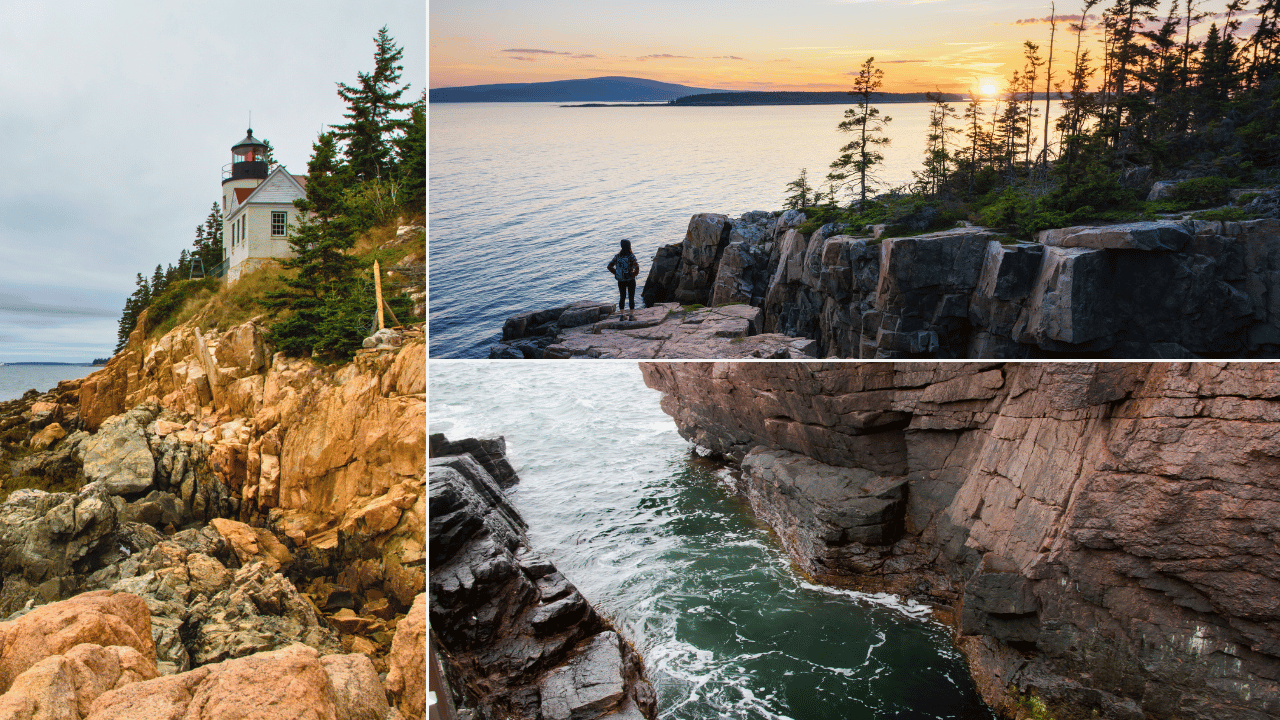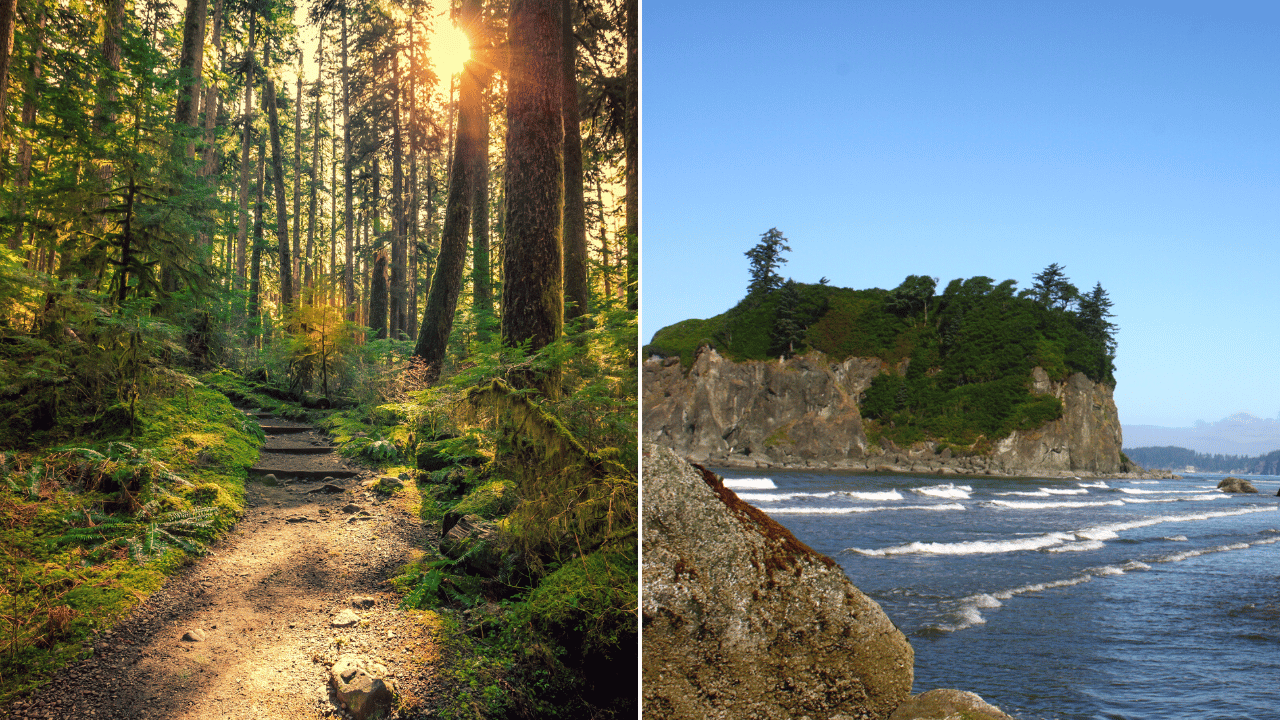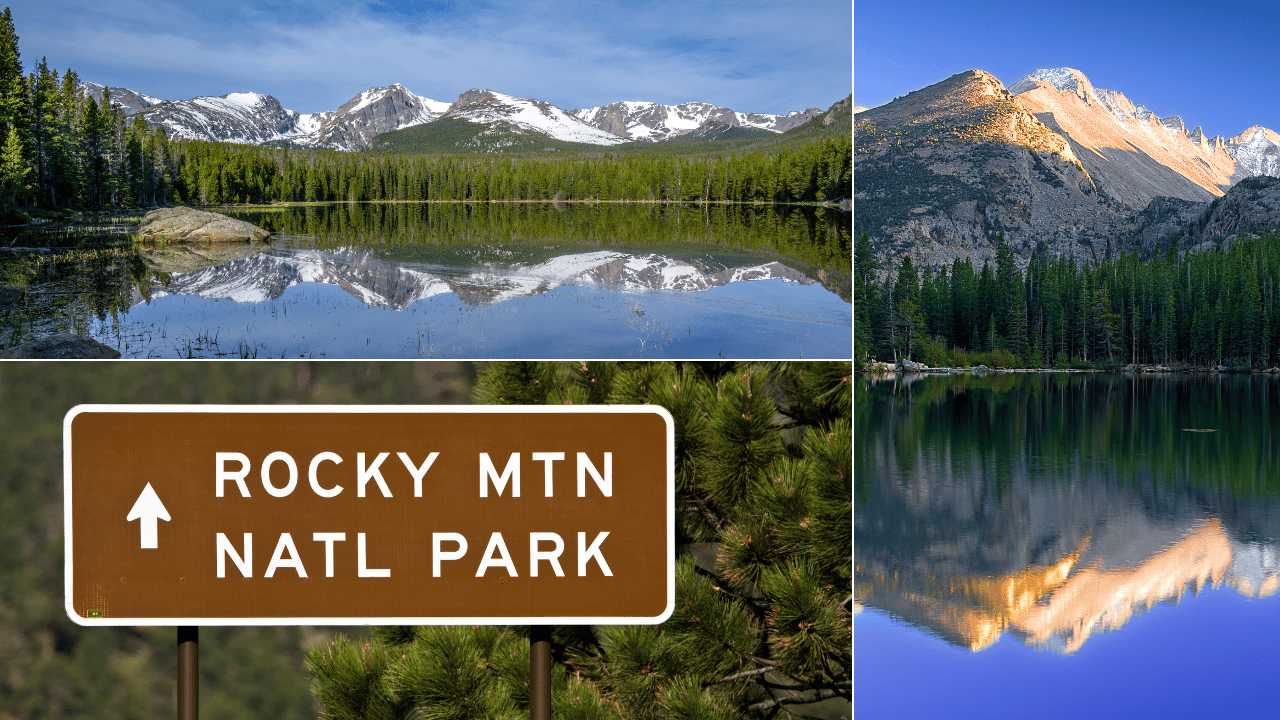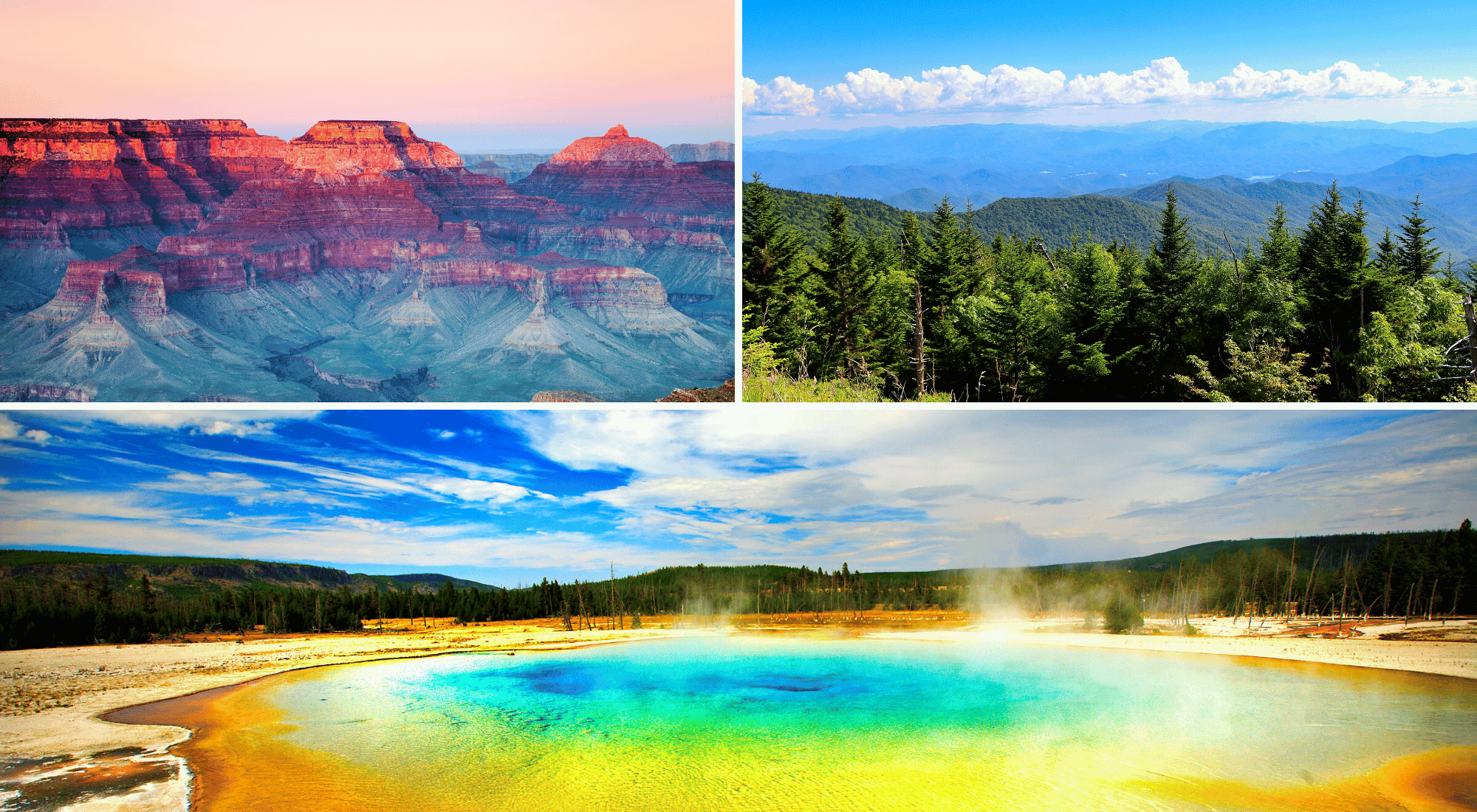Best Time to Visit Death Valley National Park 🌄🌵
Timing is key for a great visit to Death Valley. Explore from late fall to early spring (October-April) when temperatures are milder for hiking and sightseeing. Enjoy breathtaking vistas, vibrant wildflowers, and crisp starry nights in this stunning desert landscape without the summer heat.
Journey Fanatics may earn a commission from qualifying purchases, but we promise the prices are still the same for you!
Are you ready for an unforgettable adventure in one of the most stunning landscapes on earth? Death Valley National Park is a breathtaking destination filled with unique geological wonders and awe-inspiring vistas! 🏜️
Whether you're chasing the dazzling sunsets over the Mesquite Flat Sand Dunes or stargazing under the dark, pollution-free skies, each moment spent here is magical.
But timing is everything when it comes to exploring this remarkable place! 🌌 Join us as we uncover the best times to experience all that Death Valley has to offer, ensuring your trip is filled with excitement and beauty! 🎉✨
Overview of Death Valley National Park
Nestled in the heart of California, Death Valley National Park is a captivating landscape that showcases extraordinary natural features and diverse ecosystems. As the hottest, driest, and lowest national park in the United States, it boasts stunning contrasts—from the vast salt flats of Badwater Basin, sitting 282 feet below sea level, to the rugged peaks of the Panamint Range.
Visitors can explore iconic sights like the mesmerizing Artist's Palette with its vibrant color formations, the eerie yet fascinating Devil's Golf Course, and the towering Eureka Dunes, known for their singing sands.
With its rich history, unique wildlife, and breathtaking scenery, Death Valley offers an unforgettable experience for adventure seekers and nature lovers alike!
Best Times to Visit
When planning your visit to Death Valley National Park, it's essential to consider the seasons and how they can enhance your experience. Fall (mid-October to November) is one of the most ideal times to explore, as temperatures begin to drop, making outdoor activities more enjoyable. During this season, the crowds are lighter compared to the winter months, allowing you to soak in the stunning vistas in relative peace.
Winter (December to February) offers cooler temperatures that can dip to the low 40s°F (around 5°C) at night, perfect for hiking and sightseeing. While daytime temperatures are comfortable for exploring, it's the clear skies of winter that provide some of the best stargazing opportunities during the annual Dark Sky Festival.
Spring (March to May) is another fantastic option, with wildflowers blooming, especially after a good rainy season. The weather is warm but not too hot, ideal for taking in the vibrant colors of the desert landscape. However, this is also a peak season, so expect larger crowds during holidays and weekends.
Summer (June to September) in Death Valley can be challenging due to extreme heat, reaching well over 120°F (49°C). If you do choose to visit during these months, aim for early mornings or evenings to avoid the hottest parts of the day. Though the Death Valley temperatures are daunting, fewer tourists mean more solitude in this incredible national park.
Each season in Death Valley brings its unique charm and opportunities, so choose the timing that best fits your travel preferences!
Seasonal Temperature Breakdown
Temperature variations throughout the year in Death Valley National Park are extreme and distinct, each season contributing to the park's unique allure. Early summer starts to bring rising temperatures, with daytime highs steadily climbing, though not yet reaching the peak heat of later months. It offers a brief window for those seeking a more moderate experience before the full intensity of summer sets in.
Summer is characterized by blistering heat, with daytime temperatures often soaring above 120°F (49°C). This sweltering climate makes outdoor activities quite challenging and requires careful planning. If you’re venturing out during these months, aim for mornings or evenings to enjoy cooler, more tolerable conditions while witnessing unforgettable sunsets.
As the sun sets on summer, winter brings a refreshing contrast. With temperatures dropping to the low 40s°F (around 5°C) at night and comfortable daytime highs, winter is an ideal time for hiking and exploring the park's diverse landscapes. This season not only offers cooler weather but also clearer skies, perfect for stargazing, especially during the popular Dark Sky Festival.
Spring ushers in a vibrant transformation as wildflowers bloom, painting the desert in dazzling colors after a rainy season. Temperatures during this time are pleasantly warm, ranging from the mid-70s to mid-80s°F (around 24-30°C), making it one of the most delightful seasons for outdoor activities. However, with its enchanting scenery, spring attracts more visitors, so be prepared for larger crowds while enjoying the beauty of blossoming flora and fauna. Each season in Death Valley National Park provides its unique experience, showcasing the remarkable adaptability of this stunning landscape.
Wildflower Field Guide: If you plan to visit during blooming season, a field guide on local wildflowers will help you identify and appreciate the vibrant blooms that emerge after rain. Get a wildflower field guide
Must-See Attractions
- Mesquite Flat Sand Dunes
Activity Suggestions: Explore the vast expanse of golden sand by hiking or sandboarding. Early mornings offer stunning sunrise views, while evenings provide a chance to capture memorable sunset silhouettes.
- Zabriskie Point
Activity Suggestions: Hike the short trail to the viewpoint for breathtaking panoramic views of the badlands. This spot is especially popular for sunrise photography, showcasing the incredible hues of the landscape as the sun rises.
- Golden Canyon
Activity Suggestions: Embark on a scenic hike through Golden Canyon, where you can enjoy the vibrant rock formations and stunning vistas. For a longer adventure, continue your hike to the red cliffs of Red Cathedral or further onto the popular Moorish Castle route.
- Badwater Basin
Activity Suggestions: Visit the lowest point in North America, where you can walk out onto the salt flats and witness unique formations. Pack a picnic and soak in the vast, otherworldly landscape, ideally during sunrise or sunset for magical lighting.
- Artist's Palette
Activity Suggestions: Drive along the Artist’s Drive loop to marvel at the striking multi-coloured hills. Don’t forget to stop at the viewpoint for photos and consider a short hike to appreciate the vibrant mineral formations up close.
- Devil's Golf Course
Activity Suggestions: Stroll among the jagged salt formations, which create a stunning yet harsh landscape. Bring along your camera to capture the stark contrast of textures and the expansive desert scenery.
- Eureka Dunes
Activity Suggestions: Trek to the Eureka Dunes for a unique experience where you can hear the "singing sands." Plan your visit during the afternoon when the sunshine enhances the dunes’ beauty, making it perfect for exploration and photography.
These attractions each offer a distinctive glimpse into the captivating beauty of Death Valley National Park, making your visit an adventure filled with unforgettable experiences!
Night Sky Experiences
Death Valley National Park is renowned for its exceptional stargazing opportunities, thanks to its remote location and minimal light pollution. The park boasts some of the darkest skies in the United States, making it an ideal destination for astrophotography and simply appreciating the vastness of the universe. One of the best spots for viewing the Milky Way is Badwater Basin, where the expansive salt flats provide an unobstructed view of the night sky. Zabriskie Point also offers breathtaking panoramic views that are perfect for stargazers looking to capture the shimmering stars against the rugged landscape.
An annual highlight is the Dark Sky Festival, typically held in February, which celebrates the beauty of the night sky with a range of events and activities. During the festival, visitors can partake in guided stargazing sessions, attend educational presentations about astronomy, and participate in telescope viewing for an up-close look at celestial wonders. The combination of the park's stunning natural beauty and the festival's engaging activities makes it a must-visit for anyone passionate about the cosmos. Don't forget to bring a blanket and your camera to fully enjoy the enchanting nocturnal experience that Death Valley has to offer!
Tips for Visiting
When planning your trip to Death Valley National Park, packing wisely is essential for a safe and enjoyable experience. Be sure to include plenty of water—at least one gallon per person per day—as dehydration can occur quickly in the arid climate. Bring sun protection, including sunscreen, a wide-brimmed hat, and sunglasses, as UV exposure can be intense, especially during the summer months. It's also advisable to wear lightweight, long-sleeved clothing to shield yourself from the sun while remaining cool.
Safety precautions are paramount in extreme temperatures. If visiting during summer, aim to explore early in the morning or later in the evening to avoid the harsh midday sun. Monitor weather conditions and be prepared for rapid changes, especially in higher elevations. Always stick to marked trails and inform someone of your plans if venturing into remote areas, as cell service is limited. Lastly, purchasing a park map upon arrival will help you navigate and pinpoint points of interest effectively, ensuring a memorable adventure without unnecessary worries.
Given the limited cell service and power outlets in the park, it's wise to carry a high-capacity portable power bank. This essential tool will keep your devices charged, allowing you to navigate and document your trip without interruptions. Shop portable power banks
Adventure Activities
Death Valley National Park offers a plethora of outdoor activities that cater to various interests and skill levels. Hiking is a popular choice, with numerous trails that showcase the park's stunning landscapes. For beginners, the Golden Canyon Trail provides a moderate hike with easy access to vibrant rock formations, while more advanced hikers may enjoy the challenging terrain of Telescope Peak which boasts panoramic views from the highest point in the park.
Durable, lightweight hiking shoes or boots are a must-have for navigating the diverse terrain of Death Valley, providing you comfort and support as you explore the stunning landscapes. Find hiking shoes
Photography enthusiasts will find endless inspiration in the park's unique geological features and stunning vistas. Zabriskie Point is renowned for its sunrise and sunset photography opportunities, with the soft light illuminating the badlands' intricate textures and hues. Additionally, the Artist's Palette offers a dramatic display of colorful hills that are perfect for capturing vibrant images.
A pair of compact binoculars will allow you to observe local wildlife from a safe distance, enhancing your appreciation for the park's unique flora and fauna. Browse binoculars
For those seeking a thrill, off-roading is an exhilarating way to explore more remote areas of the park. The Chadwick Road provides access to the rugged backcountry, where adventurers can discover hidden gems like the Eureka Dunes and the more secluded Desolation Canyon. Make sure to come prepared with a suitable vehicle and check trail conditions, as some areas may require a high-clearance 4WD. Each of these activities allows visitors to connect with the remarkable natural beauty of Death Valley, making for an unforgettable experience!
Planning Your Trip
When visiting Death Valley National Park, having a solid plan for logistics can enhance your experience significantly. Accommodations range from campgrounds to hotels both inside and outside the park. The Furnace Creek area features several options, including the Furnace Creek Ranch and the Oasis at Death Valley, which cater to different preferences and budgets. For a more rustic experience, consider camping at sites such as Mesquite Flat Sand Dunes Campground or Thorndike Campground.
Whether you're opting for a campground stay or a backcountry adventure, high-quality camping gear like tents, sleeping bags, and cooking supplies will help make your experience comfortable and enjoyable. Explore camping gear
Gas stations are limited in the park, so it’s essential to fill up your tank in nearby towns like Pahrump or Baker before entering. Inside the park, the only remaining gas station is located at Furnace Creek, but keep in mind that prices may be higher than in urban areas.
Parking is available at various trailheads and viewpoints throughout the park, but it can fill up quickly, especially during peak season. Arriving early in the day is advisable to secure a spot and avoid the crowds.
Cell service is sparse within Death Valley, particularly in remote areas. It’s best to share your plans with someone before heading out, and consider downloading maps or information about the park in advance. To ensure you stay connected, bring a portable charger, as power outlets may not be readily accessible during your visit. Being prepared for these logistical aspects will help you enjoy all that Death Valley National Park has to offer without unnecessary stress.
Local Flora and Fauna
Despite its harsh conditions, Death Valley National Park is home to a diverse array of wildlife and plant species that have adapted to survive and even thrive in this extreme environment. One of the most notable plants is the creosote bush, which can live for hundreds of years and produces a distinctive smell after rain. Other resilient species include the Joshua tree, known for its striking silhouette, and the windmill palm, which adds a touch of greenery to the arid landscape.
Wildlife is equally fascinating, with species such as the desert tortoise, kit fox, and bighorn sheep calling this park home. During the spring, the landscape comes alive with wildflowers, like the iconic California poppy and the elusive desert lily, which bloom following the occasional rains, creating a vibrant display against the backdrop of seemingly barren wilderness. In contrast, the summer months see many animals reduce their activity during the scorching heat, often becoming nocturnal to evade the day’s extreme temperatures. In the cooler autumn and winter months, more wildlife can be spotted foraging for food as they prepare for the colder nights. This seasonal shift in activity showcases the remarkable adaptability of both flora and fauna in the unforgiving climate of Death Valley.
Events and Festivals
Death Valley National Park hosts several annual events and festivals that celebrate its unique environment. Notable among these is the Dark Sky Festival, typically held in February, where astronomy enthusiasts gather to enjoy stargazing sessions, workshops, and presentations about the cosmos, taking advantage of the park's exceptionally dark skies free from light pollution.
Another highlight is the Wildflower Season, generally occurring between February and April, depending on precipitation levels. During this time, the park can transform into a vibrant display of colour, with blooms such as yellow desert sunflowers and purple sand verbena. The best viewing periods usually fall around mid-March when peak blooms are often seen.
Additionally, the park occasionally celebrates Earth Day in April, featuring activities that promote conservation and appreciation of the desert environment, including guided nature walks and educational talks. These events enhance the visitor experience, offering opportunities to connect with both the astronomical wonders and the beautiful seasonal changes within Death Valley.
Staying hydrated is crucial in the desert heat. A reusable water bottle with a built-in filter ensures you have access to clean drinking water, whether you're filling up in nearby towns or at designated areas in the park. Purchase water bottles with filters
Best Time to Visit Death Valley National Park FAQs
Visiting Death Valley National Park is an adventure filled with wonder, but it’s natural to have questions before hitting the road.
Knowing the best time of year to explore this breathtaking landscape can make all the difference in your experience.
In this section, we've gathered some of the most frequently asked questions to help you plan your perfect trip and make the most of your time in this stunning desert wonderland!
1. What’s the best time to visit Death Valley National Park?
The ideal time to visit Death Valley is during the cooler months, from late fall through early spring (October to April). You’ll enjoy mild temperatures perfect for hiking and exploring, making your adventure much more pleasant!
2. Are there any entrance fees for the park?
Yes, there is an entrance fee of $30 per vehicle, valid for seven consecutive days. Alternatively, consider purchasing an annual pass if you plan to visit multiple national parks!
3. Can I hike in Death Valley during summer?
While it's technically possible, it's not advisable! Summer temperatures can soar above 120°F (49°C), which can be dangerous. If you visit during this season, opt for early morning or late evening hikes and carry plenty of water.
4. Where can I find the best viewpoints in the park?
You’re in for a treat! Some of the must-see viewpoints include Dante’s View for sweeping vistas, Zabriskie Point for stunning sunrises, and Badwater Basin, the lowest point in North America. Each offers a unique perspective of the park’s incredible landscapes!
5. Is camping allowed in Death Valley?
Absolutely! There are several campgrounds to choose from, such as Furnace Creek and Mesquite Flat Sand Dunes, as well as backcountry camping options for those seeking solitude. Just remember to book ahead during peak season!
6. What should I pack for my trip?
Make sure to bring plenty of water, sunscreen, comfortable hiking shoes, and layers of clothing to accommodate the temperature fluctuations. A good camera is also a must to capture the breathtaking scenery!
7. Are there any guided tours available in the park?
Yes! Various companies offer guided tours that cater to different interests, from wildlife spotting to stargazing adventures. These tours can provide a unique insight into the park’s geography and history, so consider joining one for a more enriching experience!
8. Can I see wildlife in Death Valley?
Definitely! While wildlife may be more active during cooler months, keep your eyes peeled for unique species like the desert tortoise, kit fox, and bighorn sheep. Springtime brings wildflower blooms and a bustling ecosystem, making it a vibrant time for wildlife watching!
9. What can I expect to find at Furnace Creek Visitor Center?
Furnace Creek Visitor Center serves as the primary hub for visitor information in Death Valley National Park. Here, you can find detailed information about park trails, history, and geology. The center features informative exhibits, a gift shop, and knowledgeable park rangers available to answer any questions you may have about your visit. Additionally, there are restrooms and water filling stations, making it a convenient stop for all your needs!
Embrace the Beauty of Death Valley
As you prepare for your adventure in Death Valley National Park, remember that this extraordinary landscape promises a memorable experience filled with diverse flora, fascinating wildlife, and stunning natural formations. Whether you're marveling at the vibrant wildflower blooms, gazing at the night sky during the Dark Sky Festival, or traversing the striking dunes, every moment spent here offers a unique opportunity to connect with nature. So pack your essentials, stay Hydrated, and open your heart to the wonders of the desert. Death Valley awaits to unveil its secrets, inviting you to create lasting memories in one of the most remarkable places on Earth.
Happy Travels! 🌍
Need some excitement for your next trip? Check out Amazon! Try Audible Plus for two free books. 🎧 Simplify your packing with a FREE 30-day trial of Amazon Prime for quick, two-day delivery. 📦 Don't miss these deals and make your journey unforgettable! ✈️












